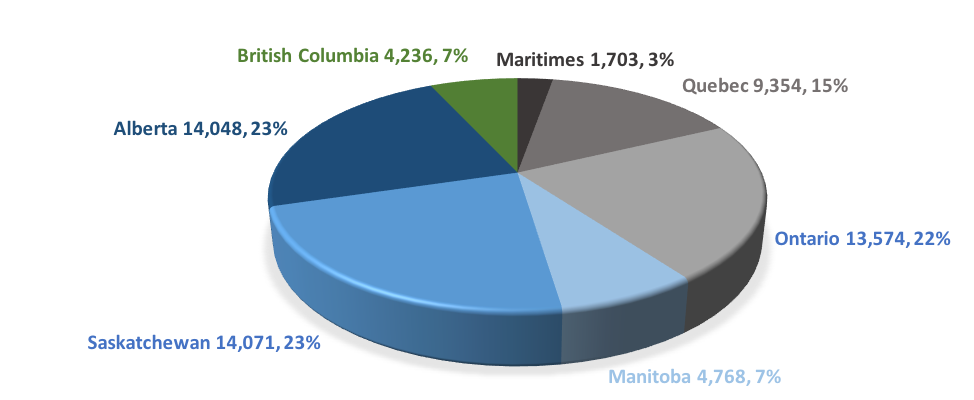
News
Business & Policy
Environment
Cleanfarms releases national report on ag plastics use
August 4, 2021 By Cleanfarms
Cleanfarms recently released a first-ever national benchmark report that documents how much plastic materials are generated by the agricultural sector and by region across the country.
The report, Agricultural Plastic Characterization and Management on Canadian Farms, has been posted to cleanfarms.ca and is the result of an 18-month research project to identify the types and amount of plastic packaging and products used in the sector across Canada. This research provides in-depth figures that will help guide the ag sector as it explores how agricultural plastics packaging and products can contribute to Canada’s emerging circular economy. The research was funded in part by Environment and Climate Change Canada.
“This data is available at an important time. There is considerable activity at the global level aimed at changing the ways that plastics are managed,” said Barry Friesen, Cleanfarms executive director. “Closer to home, we can now measure our progress just as new initiatives are put in place that complement both established and high-performing recycling programs and the ongoing commitment in the farming community to do even more.”
Cleanfarms is Canada’s only agricultural industry stewardship organization, developing and operating programs across Canada specifically for farmers to help them manage plastic materials when they are no longer useful. It currently operates a Canada-wide program that recovers empty 23-litre and smaller pesticide and fertilizer containers. The program has been in operation for 30 years. In 2020, 76 per cent of the empty containers were recovered for recycling.
One of Cleanfarms’ newer programs that helps Saskatchewan farmers recycle grain bags has seen collection volumes increase substantially since this program was first offered. In 2018 Cleanfarms recovered 1,257 tonnes of grain bags. In 2020, Saskatchewan farmers doubled this, returning 2,536 tonnes of grain bags for recycling.
“Ag plastics like grain bags, bale and silage plastics and containers are central to modern agriculture. They allow for efficient storage and delivery of product on farm,” Friesen noted. “Our high recovery rate for container recycling, combined with substantial increases in grain bag volumes over a short timeframe demonstrate that farmers want to recycle. It is up to organizations like Cleanfarms to ensure that convenient, customized programs that respond to their needs are made available.”
The research estimates that Canadian farmers use nearly 62,000 tonnes of ag plastic products and packaging annually. More than half of that, about 53 per cent, is generated in the Prairie provinces; Ontario and Quebec combined generate another 37 per cent; BC accounts for about seven per cent, and the Maritimes produce the remainder at three per cent. Different commodities and farming practices impact the types and amounts of ag plastics in use. Field crop production, which includes grain and oilseeds and growing hay and fodder for livestock, account for 59 per cent of the total amount generated annually in the form of grain bags, silage wrap, bale wrap, baler wrap and bunker covers. Vegetable production, whether in field or in greenhouses accounts for another 10 per cent of the annual total and include items such as propagation trays and greenhouse films.
Different commodities and farming practices impact the types and amounts of ag plastics in use. Field crop production, which includes grain and oilseeds and growing hay and fodder for livestock, account for 59 per cent of the total amount generated annually in the form of grain bags, silage wrap, bale wrap, baler wrap and bunker covers. Vegetable production, whether in field or in greenhouses accounts for another 10 per cent of the annual total and include items such as propagation trays and greenhouse films.
“The fact that long-standing plastics management programs have been set up and operated voluntarily by the ag industry in Canada is a testament to how far this sector is ahead of the curve,” Friesen said, “Our efforts will continue to focus on expanding recycling in the ag sector to help farmers achieve their sustainability goals.”